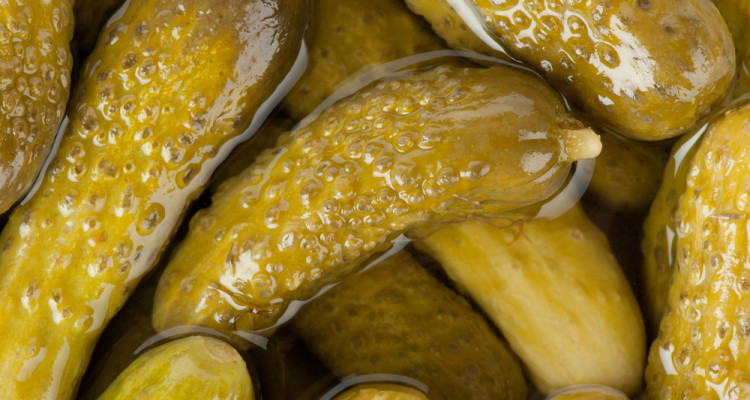I leaned against the plastic covered fence, cheering and wooing and holding up my iPhone, hoping to catch one of my friends as they exited transition and headed out on their run. We were about two-thirds of the way into Ironman Florida, an endurance event where participants swim 2.4 miles, bike 112 miles, then run 26.2 miles. The runners streamed by me in a blaze of Lycra glory. Some were still rubbing on sunscreen; some were chatting and laughing with the crowd; others were fumbling with their watches; and a few were eating. Mostly in endurance events we see people furiously chewing gummy-like carbohydrate chews, or slurping down a gel. But as I stood there, a gentleman ran by, as if in slow motion, eating a pickle. Crunching, slurping— I think I even saw a little eye roll action.
And he looked really happy about that pickle.
I was instantly intrigued. I adore pickles, and I’m also a long distance endurance athlete. “Is that a pickle?” I yelled out, not sure if he would hear me.
He met my eyes, did a head nod, smiled blissfully and said, “Yes it is!” Munching away, he ran into the distance.
I was thinking about signing up for my first Ironman, and if there was some kind of secret remedy to ease the suffering—like pickles—I wanted in.
Before chugging cold kosher pickle juice from the jar during my next workout, or trying to pack slippery spears in my tri kit, I contacted FN contributor Karyn Capozzo, RD, LD, CDE, and purveyor of pertinent pickle information. The first thing I learned from Capozzo is that pickles have about the same nutritional value as cucumbers with just a bit more salt, which is 12 calories in a medium pickle and 3g carbohydrates. Unfortunately, that is just not enough carbohydrates to help me out in a marathon— although I was certainly still willing to try. Capozzo reminded me that for every hour after your first hour of running, you need 25 to 60 grams of carbohydrates which equals about 2.5 sports gels or five whole pickles. That just sounds messy.
So where did this whole pickle idea come from? There is an old runner’s tale that if you take pickle juice (2 ounces) prior to a big race or workout, you will prevent cramps. Capozzo pointed out that this was debunked in Dr. Timothy Noakes’ book Waterlogged: The Serious Problem of Overhydration in Endurance Sports. There is no scientific evidence that pickle juice prevents cramps, but Noakes does note that the acidity of the pickle juice may cause a reflex in the throat that lessons or stops the cramping.
What if I’m craving pickles and cramping? I should just reach for the pickle juice, right? Maybe slip some dill chips in my back pocket? Obviously, no. Capozzo points out that craving pickles probably means you are craving salt, so evaluate what you are taking nutrition-wise and make adjustments, and if you are cramping, first check with your coach or training buddy to ensure you are performing movements correctly, then check your nutrition. What are the four main causes of cramps? Lack of hydration, lack of calcium, lack of potassium, and lack of salt. Address those issues first and keep a good log of what you are eating and drinking and when before your workout and during.
Still jonesing for some sour pickle goodness? Capozzo says there is no evidence that says taking two ounces of pickle juice is harmful, so if it works for you, then do it. Just make sure you do your due diligence. Ensure that your hydration and nutrition plan are sound, that you’re doing proper stretches to prevent cramping, and warn your running buddies that you are going to smell dill-lightful.

